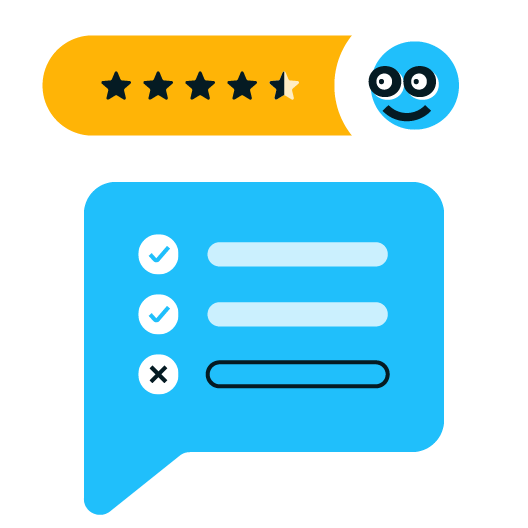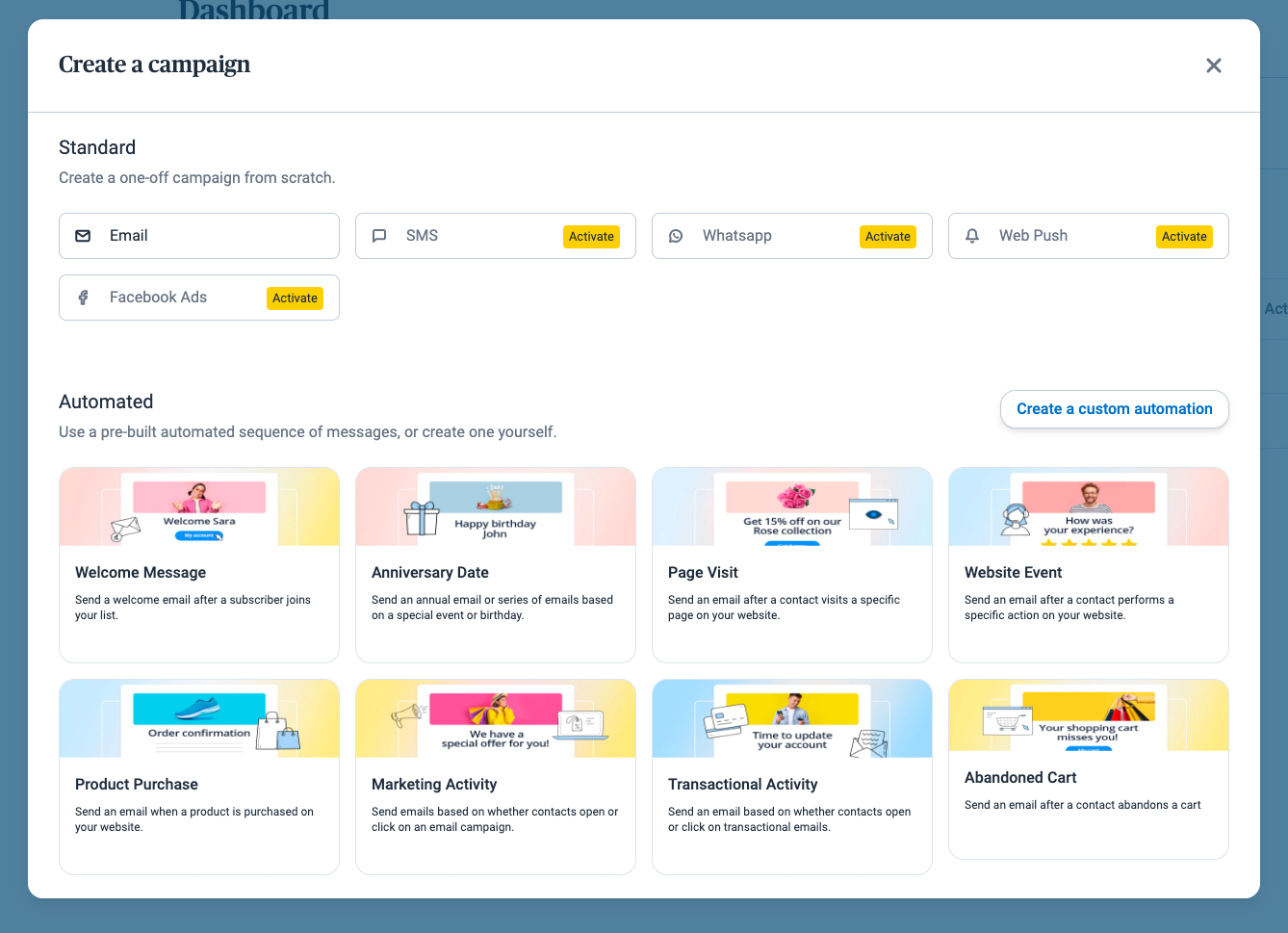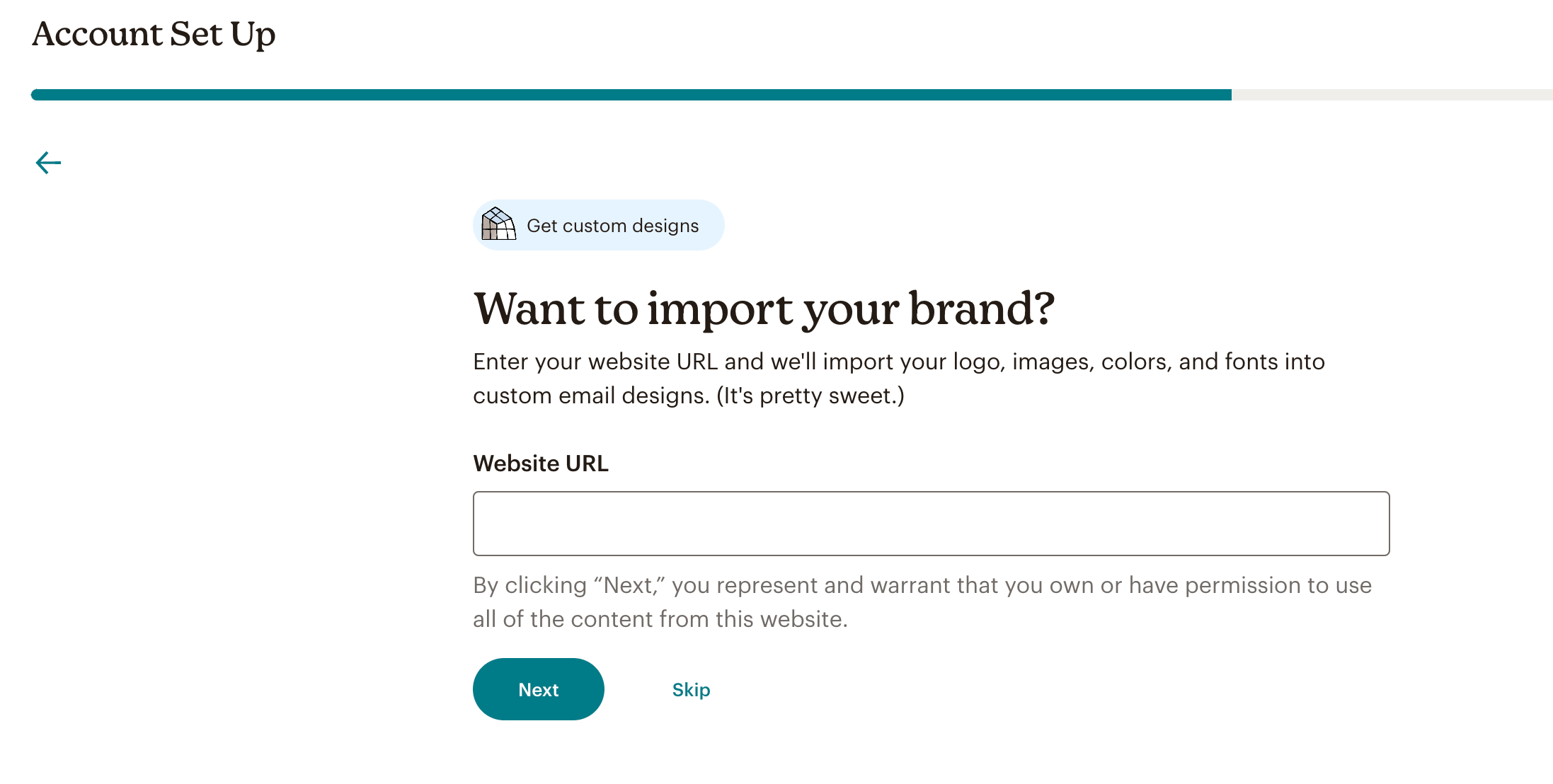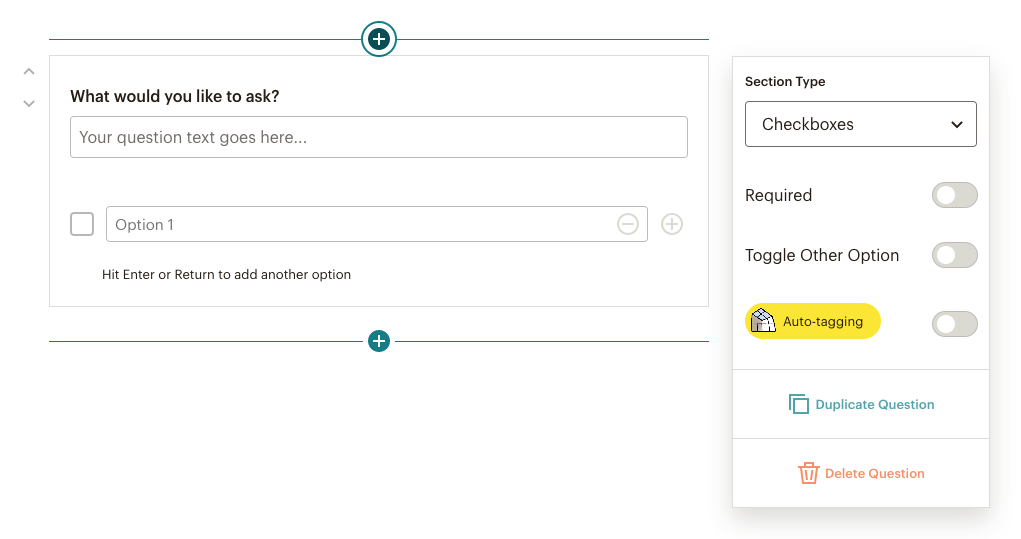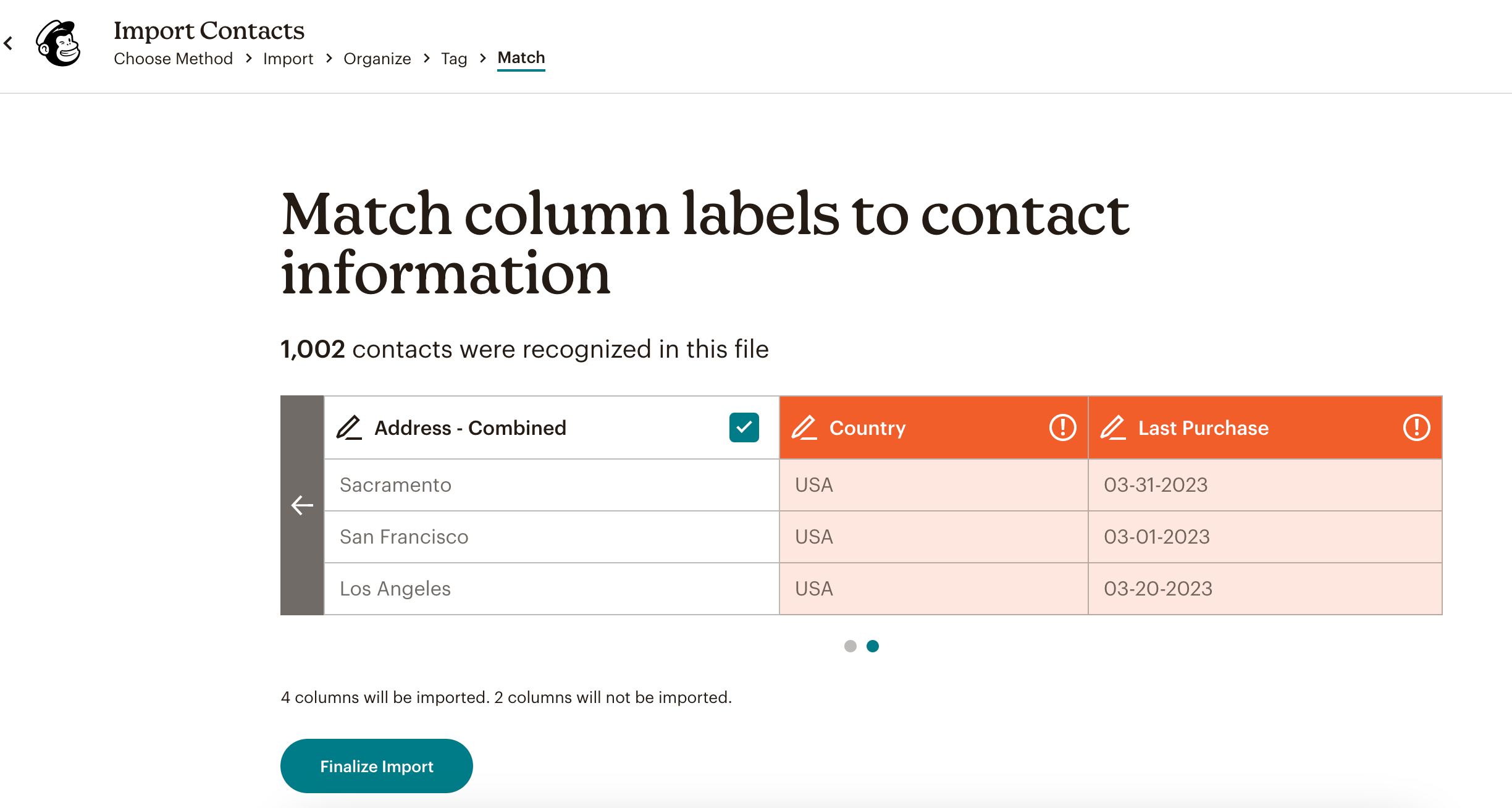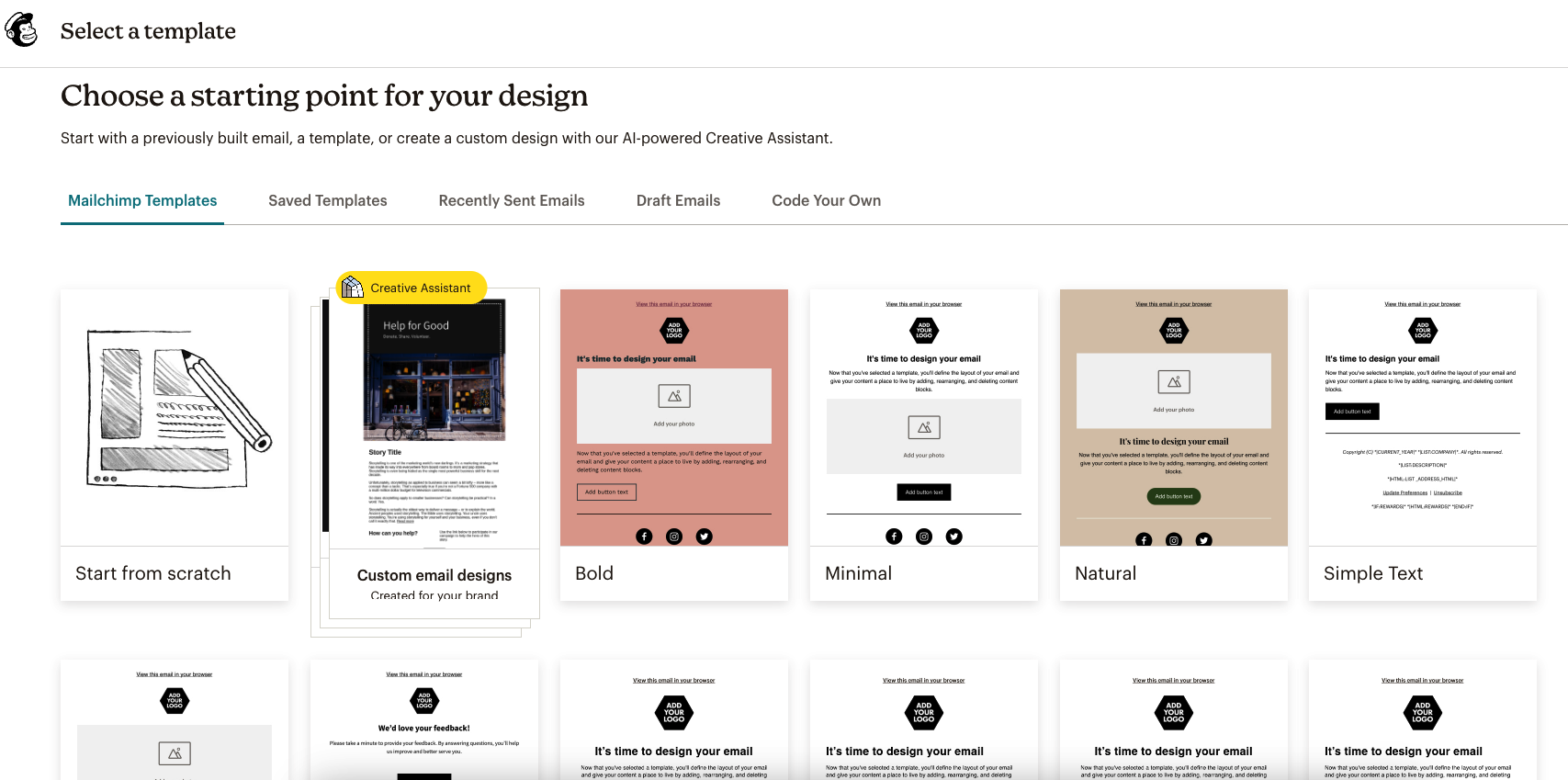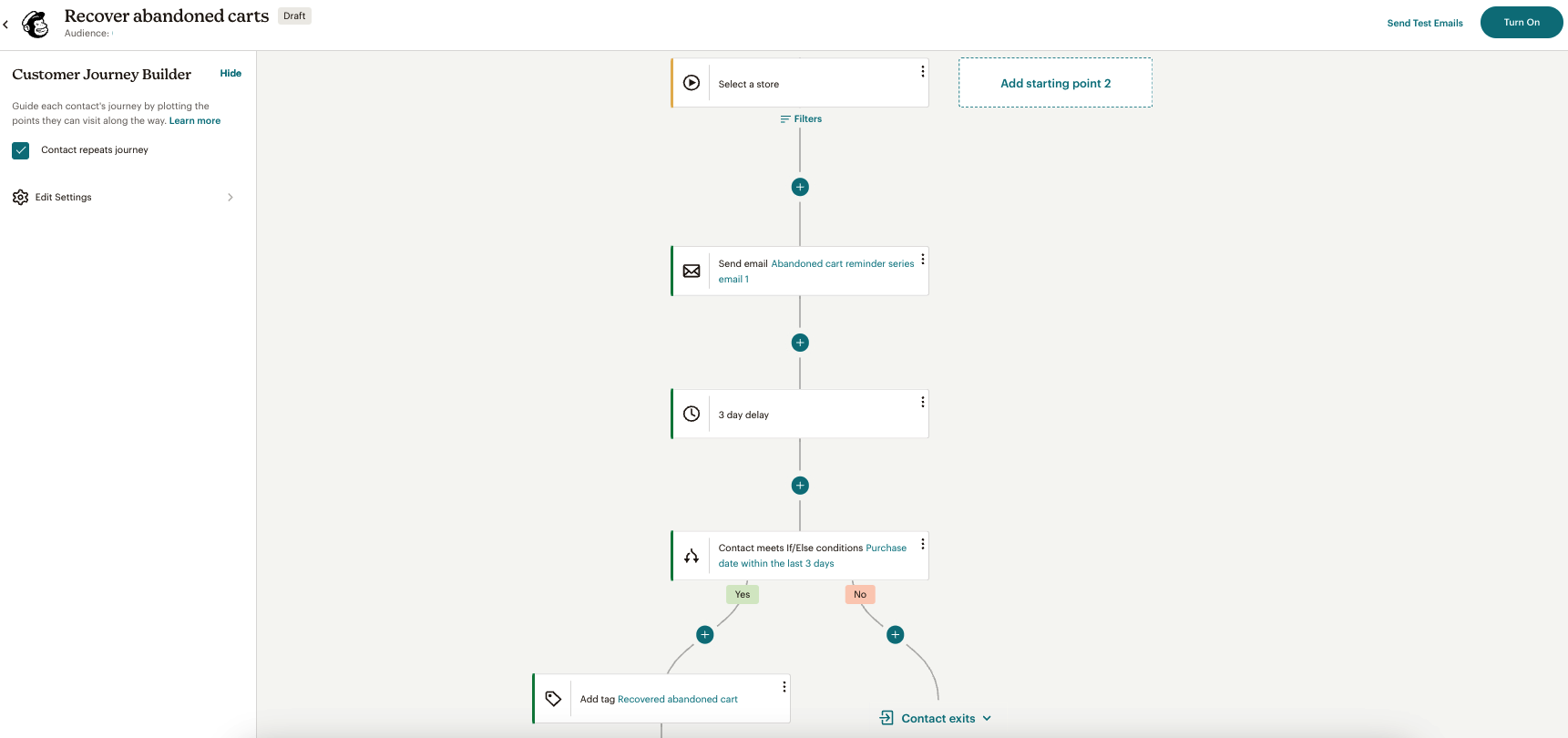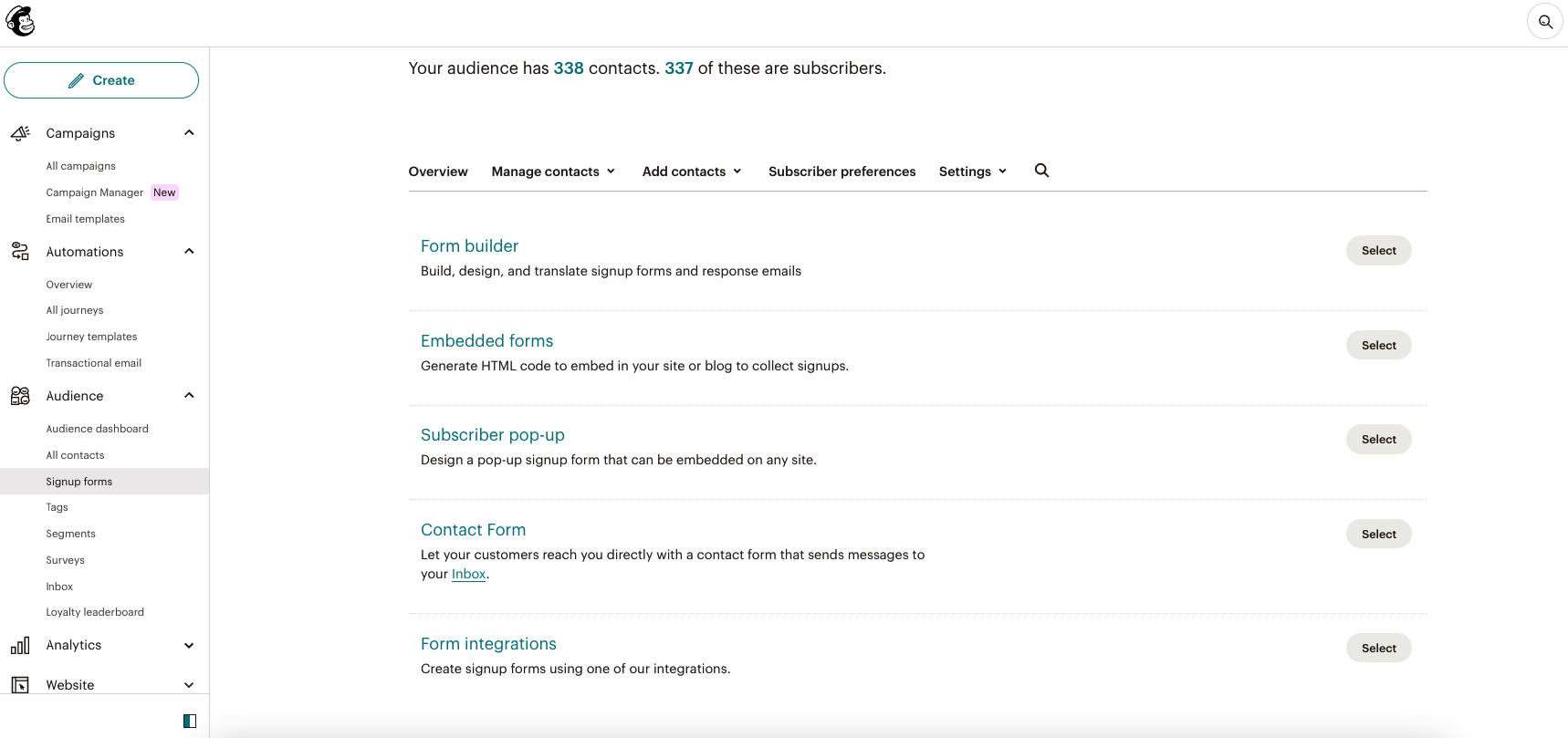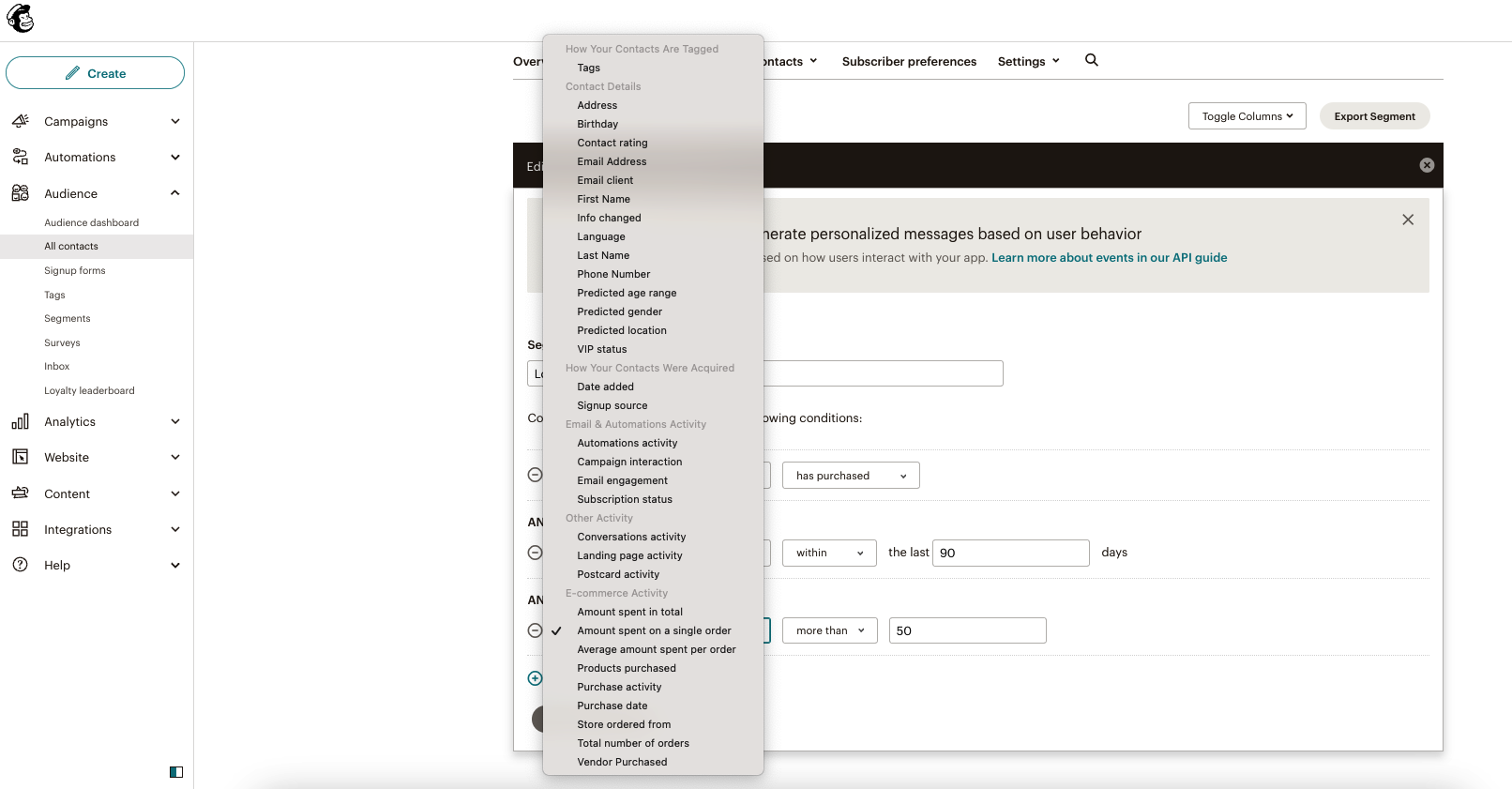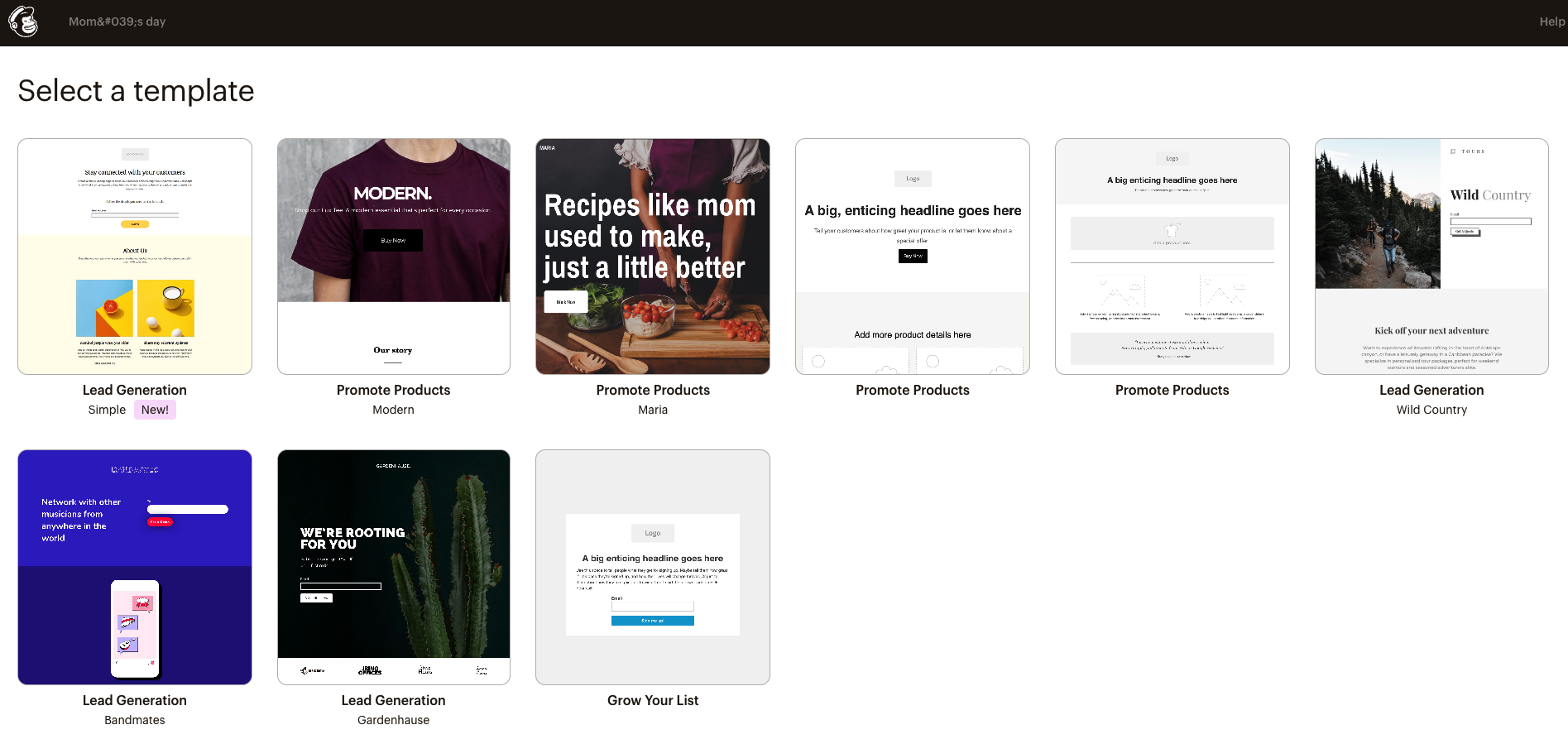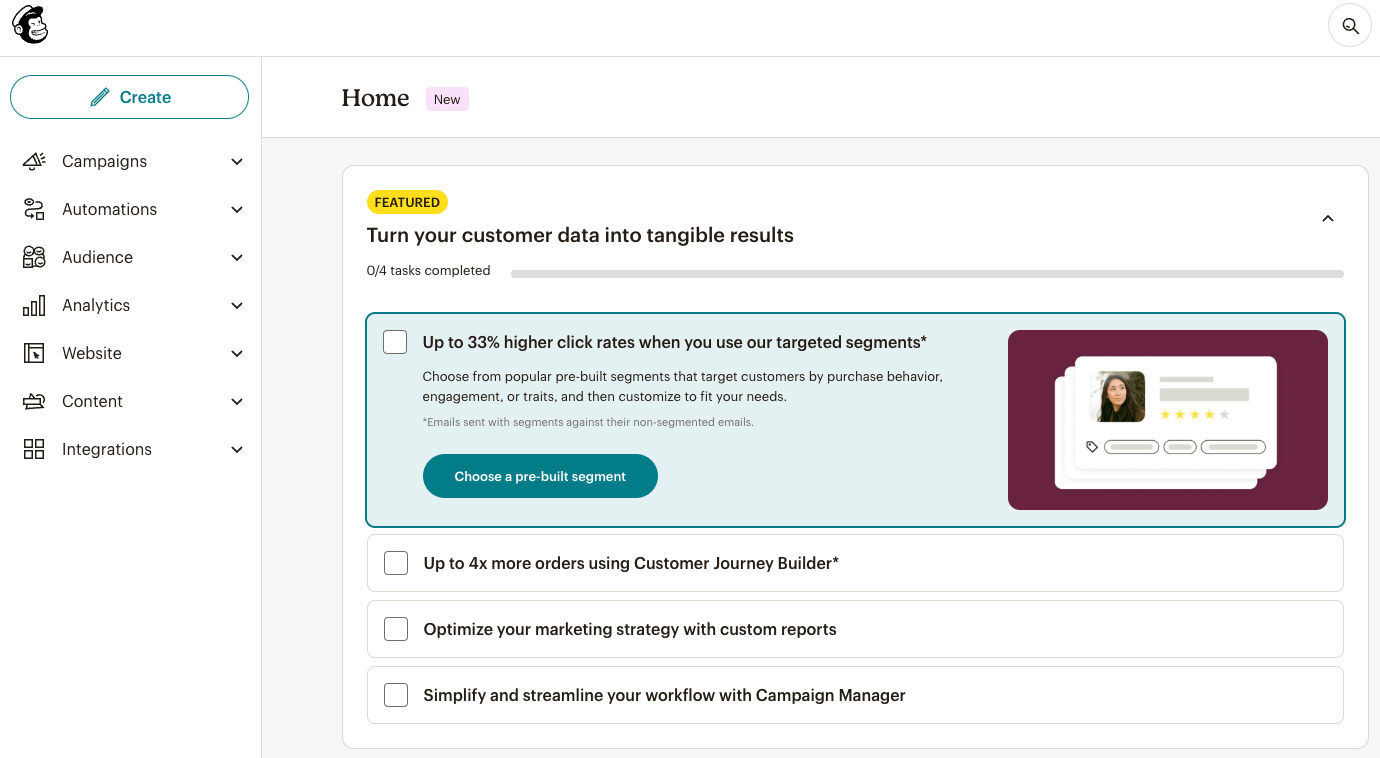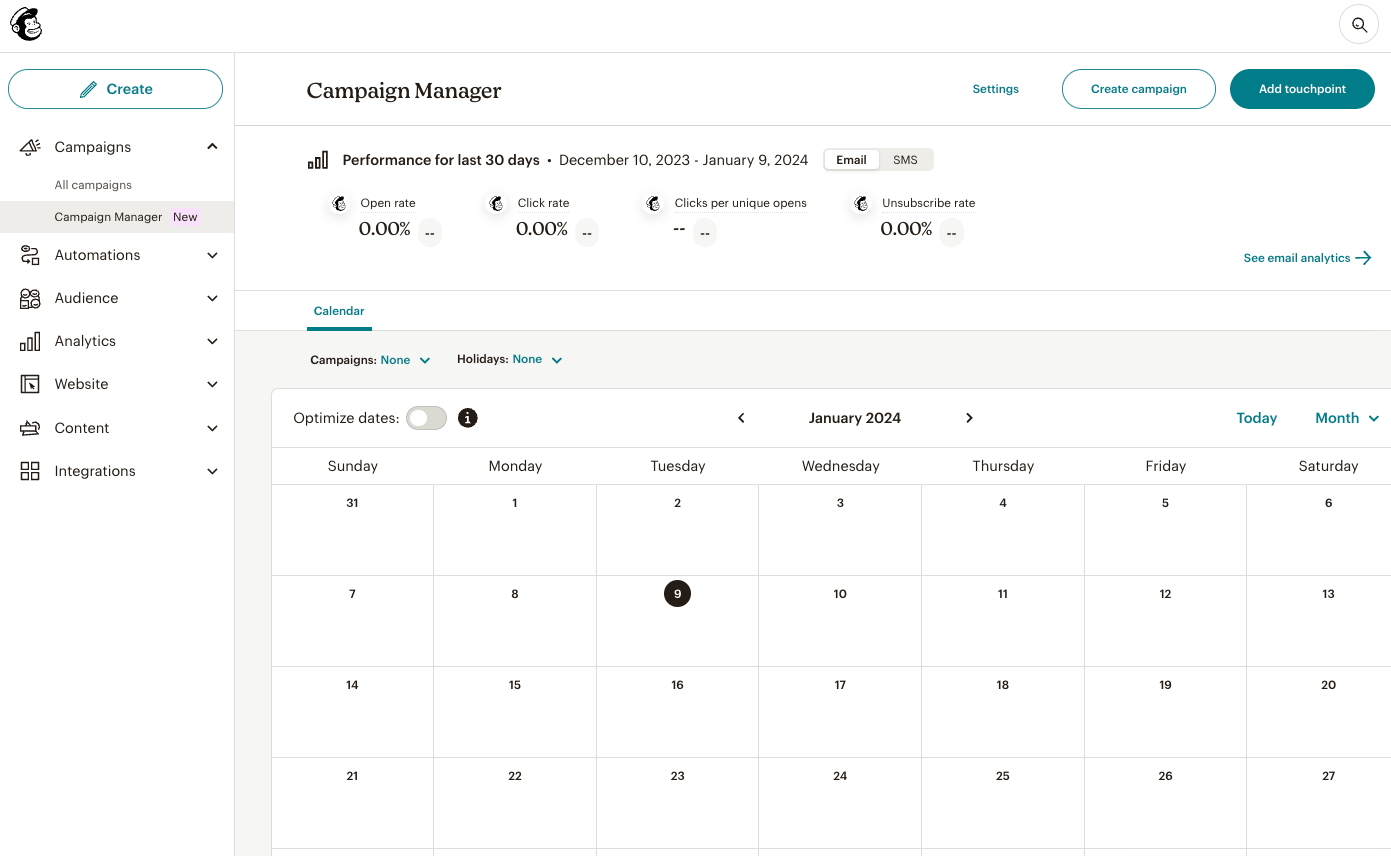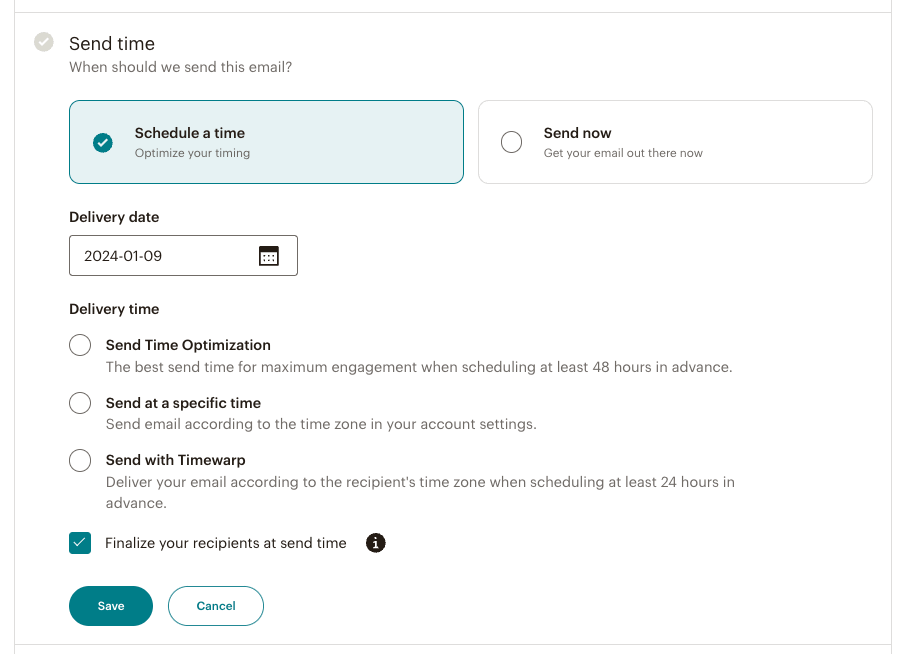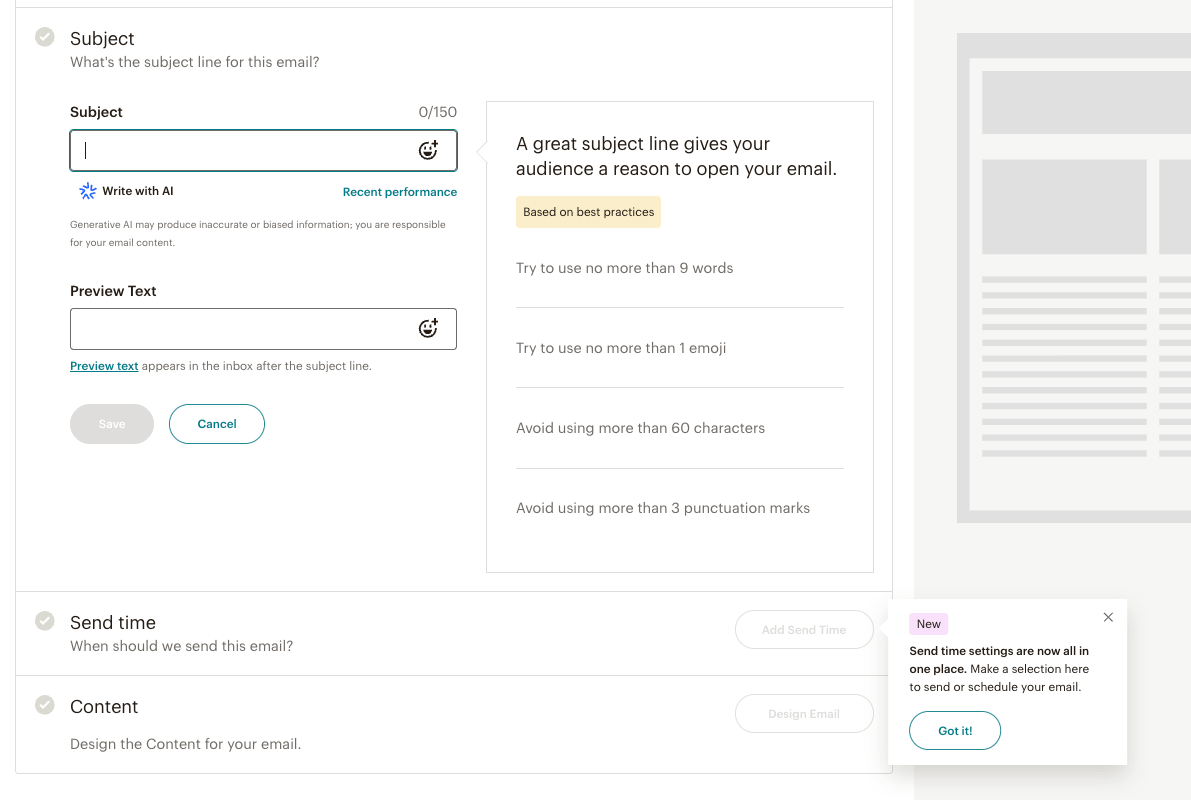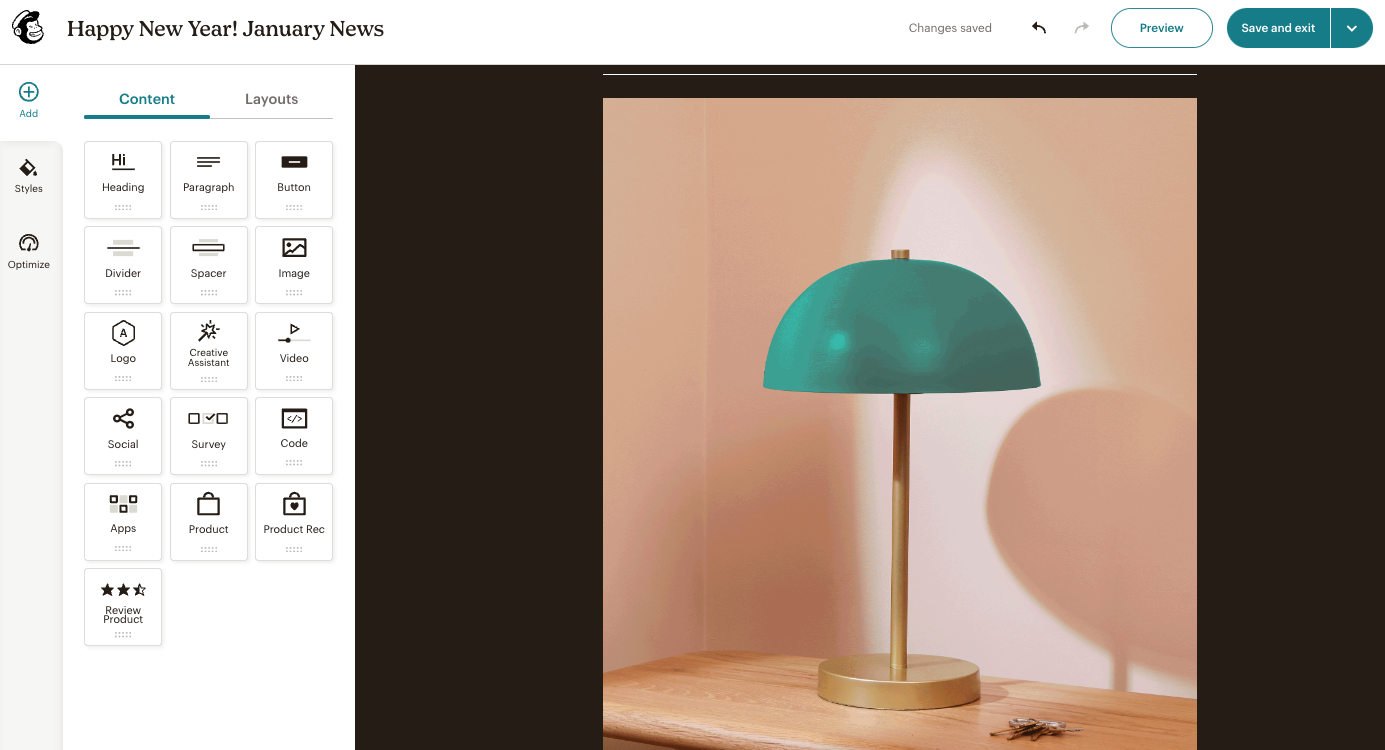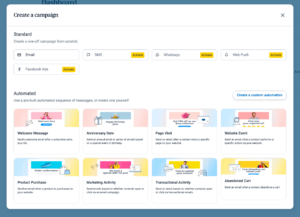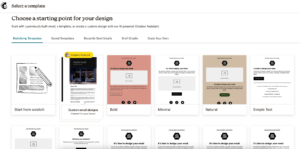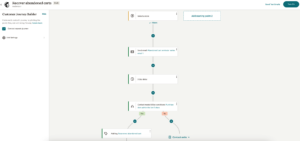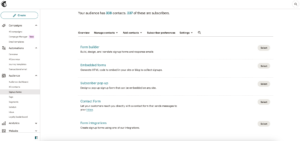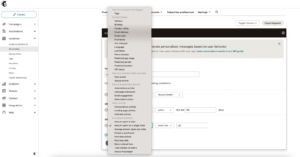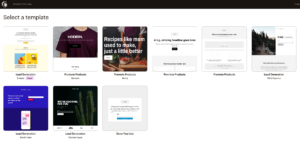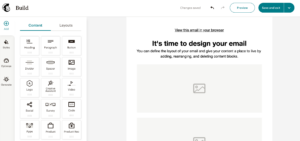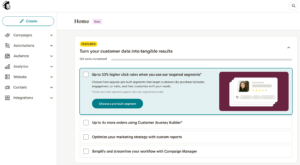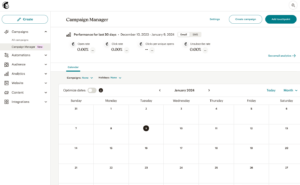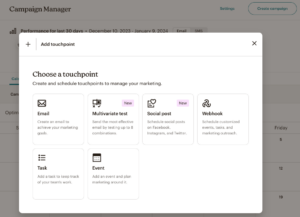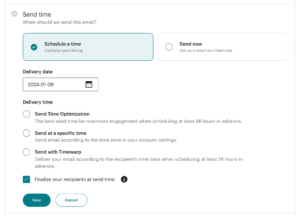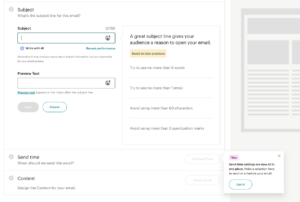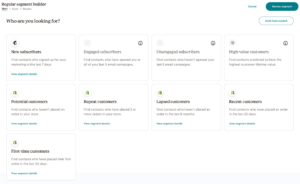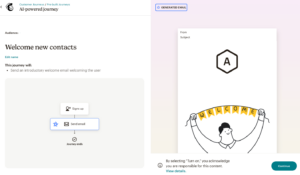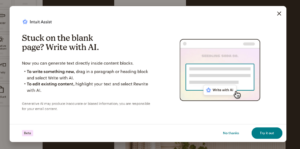If you want to invest in email marketing and are looking for a good tool, you’ve probably considered Mailchimp since it’s one of the most popular options. It has a wide range of features and functionalities compared to most of its counterparts.
Mailchimp provides a little bit of everything, from automation, segmentation, and pre-built workflows, to numerous integrations and templates. Some of its unique features include a dynamic content block and Litmus inbox preview tokens.
It’s also an easy-to-use email marketing platform that’s suitable for beginners and experienced marketers alike.
Is Mailchimp the right tool for me?
- Solopreneurs who need an all-in-one marketing tool
- Businesses that are just starting out
- Bloggers and creators
- Non-profit organizations
- Ecommerce stores in their active growth stage
- Businesses on a budget that need constant support
- Affiliate marketing businesses
Mailchimp screenshots
This next section reviews Mailchimp’s features in detail, to help you decide if it’s the right email marketing tool for you.
Mailchimp features: An in-depth review
At a glance, Mailchimp has all the essential tools most small and medium-sized businesses need for both online and offline email marketing.
This is a quick feature overview.
Let’s get more specific.
Ease of getting started ★★★★★
Mailchimp is a pretty easy tool to use. The signup process is straightforward and the user interface has a clear intuitive design. The platform provides a checklist to help with initial setup, and this is crucial for beginners.
However, since Mailchimp has a wide range of features, it can be difficult to find certain options, e.g. how to change sender’s email, or where to find the landing page builder. And it may take a little time to make the best use of all that this tool offers.
Please note that Mailchimp asks for credit card details for their 30-day free trial.
Building an email campaign ★★★★☆
The Mailchimp email campaign builder is beginner-friendly for the most part. It’s easy to name an email campaign, edit preheaders, and add content. If you follow the wizard, you won’t miss anything.
Mailchimp offers new email builder which is intuitive and easy to use. You can edit text, change themes and colors, and move images around with ease. There are a lot of useful content blocks and functionality available.
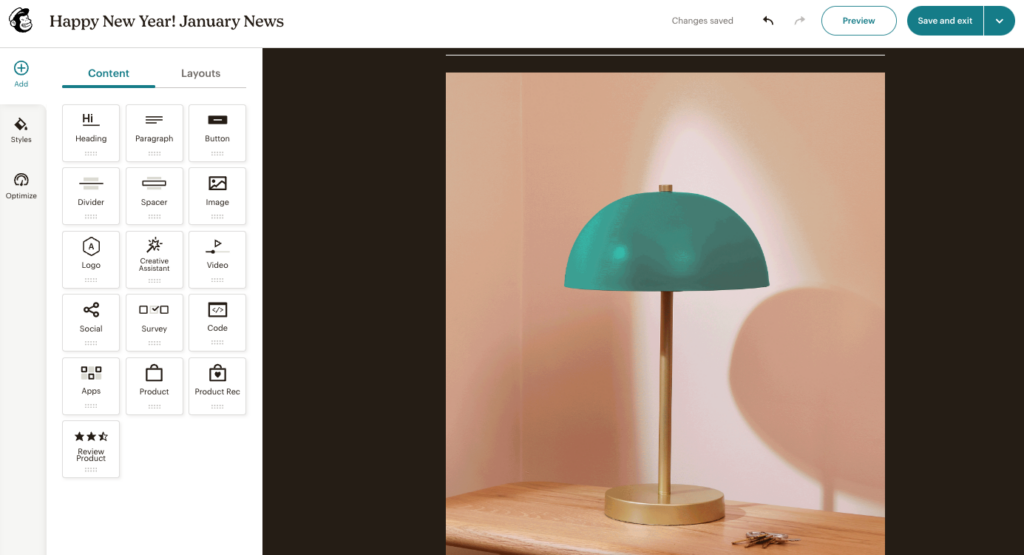
However, removing the Mailchimp tag from your email footer can be a pain. We didn’t manage to find it easily, and had to look for the answer in the help center articles.
Beyond that, Mailchimp offers good-looking, modern templates for paid plan users only. But if you are on a Free plan, you’ll get only six templates that are really basic and look outdated. So be aware of that when making a decision.
Here are some unique email-building features that set Mailchimp apart from other email marketing tools:
- Review product block: This feature lets you collect customers’ reviews from their recent purchases. It is available for Shopify users only.
- Inbox preview tokens: Through Mailchimp’s integration with Litmus, you get 25 tokens of inbox previews for different devices with paid plans. This tool generates a preview of how your email will appear on different devices.
You can use it to test your customers or a section of them. For instance, if you preview on Gmail for Chrome and Outlook, you’ll use 2 tokens.
Any residual tokens expire at the end of each billing cycle. For any extra tokens, you will be asked to pay an extra fee to Litmus.
- Postcards: Another unique Mailchimp offer is that it allows you to reach your customers in person by sending postcards. Here, you’ll design a postcard that fits your brand and they’ll print, stamp, and deliver it to your customers for you.
This costs as low as 72 cents, and you can use it to send reminders, thank you cards, coupon codes, and more to your customers. This can be done across the US and in other countries.
Also, Mailchimp launched Campaign manager – the calendar where you can plan your marketing activities, add notes, campaigns, schedule social posts, or create tasks for your team members.
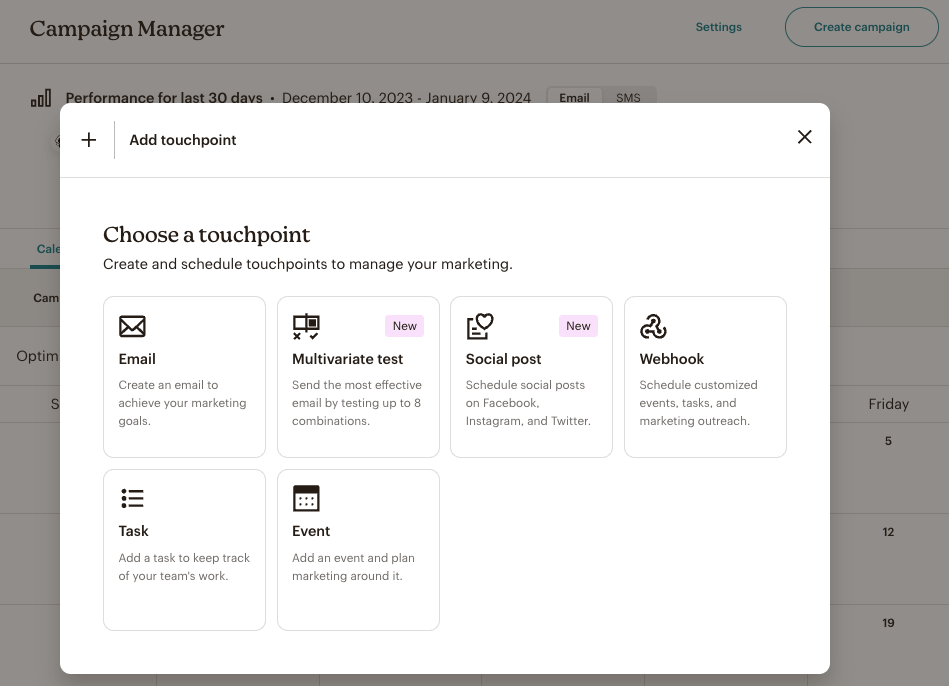
Email personalization
Mailchimp offers a wide range of email personalization options. You can personalize your email campaigns in the following ways:
- Including personalized product recommendations.
- Adding customer data to the subject line, or the text inside the email, such as: “Hey Anna, this is your coupon!”, “Hey Tom, check out what we have on sale for your size”, etc.
- Schedule the email based on time zones. FYI: email scheduling is available for paying customers only.
- Mailchimp predicts your customer demographics, letting you customize emails to fit a certain demographic.
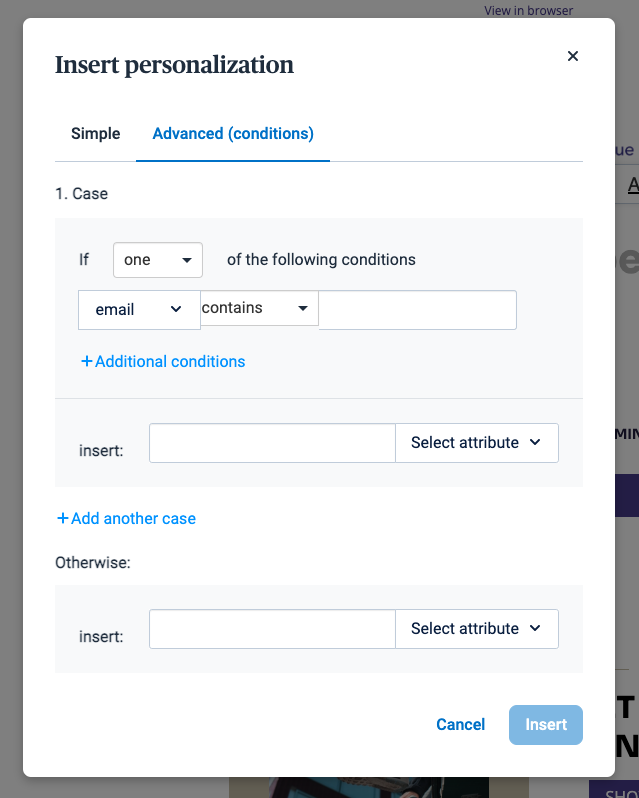
If you’re a blogger, Mailchimp may just be the tool you need for your frequent newsletters. Ecommerce businesses would also appreciate Mailchimp’s vast email-building capabilities.
Mailchimp marketing automation ★★★★★
In Mailchimp, marketing automation is called customer journeys and is relatively robust. You get automated follow-up emails based on set conditions as well as other advanced goal-oriented automation options.
The automation builder looks pretty similar to what we find in Omnisend or Klaviyo. It’s very convenient, because once you learn to use one, you can easily switch to another platform and face a steep learning curve.
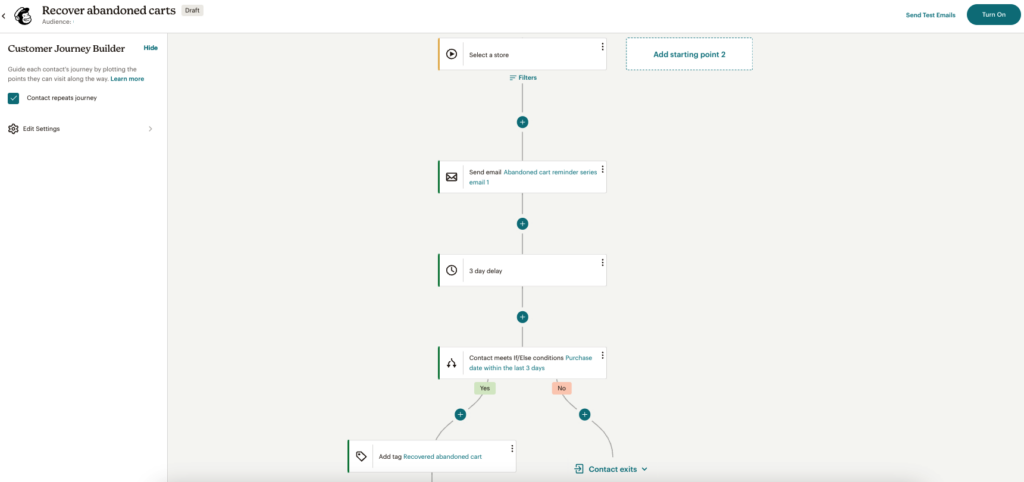
Mailchimp offers over 70 pre-built customer journey templates for both email and social media communication. Within these journeys, you can directly reach your customers where they are active, either Facebook or LinkedIn.
Recently, the platform launched generative AI tools to facilitate marketers’ work and help them create copy for marketing emails.
Unlike Omnisend or Brevo, Mailchimp does not give you the option to add web push to your marketing automation campaigns.
Signup forms and landing pages ★★★★☆
While the landing page feature can be difficult to find on Mailchimp, once you locate it in the campaign section, it’s one of the best landing page builders you can find.
Mailchimp lets you build an unlimited number of landing pages with this tool. You also get a few landing page templates for inspiration, which you’re free to customize to your liking.
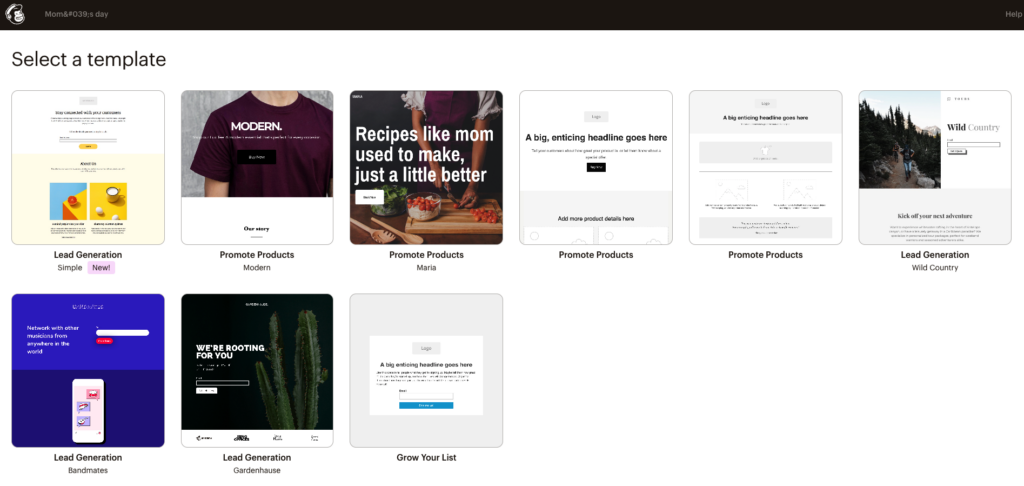
You can use an existing business domain for your landing pages if you already have a website, or register a custom domain with Mailchimp.
Here’s what Mailchimp doesn’t offer:
- Ready-to-use signup forms: Unlike other marketing tools such as Omnisend and Klaviyo, Mailchimp doesn’t offer popup templates. There is only one template available. You can modify it, add an image, data fields, and text, but it doesn’t look appealing.
- Multiple pop-ups: You can only have one pop-up at a time on Mailchimp. This means that you can’t combine an immediate pop-up with an exit-intent pop-up or differentiate pop-ups for different customers.
The analytics on the signup form performance is also limited compared to other tools.
Managing an email list on Mailchimp
Managing your email contact list with Mailchimp is straightforward. Its segmentation feature lets you tag your audiences and send them emails based on specific conditions.
However, you need to be more organized since you can’t include one email in different lists for free. Mailchimp will charge you twice for repetitive email addresses. This is the case even for unsubscribed or inactive contacts.
This is unlike most other email marketing tools in the market, which do not charge for duplicates.
Segmentation ★★★★☆
Mailchimp’s contact segmentation tool is quite robust. You’ll get standard segmentation features with up to five conditions on all the plans and unlock more advanced conditions on the Premium plan.
Segmentation parameters include:
- Contact details: name, birthday, address, email client, VIP status, etc.
- How your contacts were acquired: source, date
- Email and automations activity: email engagement, status, etc.
- Ecommerce activity: amount spent in total/per order, purchase date, purchase activity, etc.
- Other activity: conversations, or postcards.
Mailchimp also has prebuilt segments based on campaign history, purchase activity, and more to make segmentation easier for beginners.
What we missed in the segmentation part is the criteria for on-site behavior, such as browse or cart abandonment.
Analytics ★★★★★
Mailchimp offers a wide variety of metrics in their reports. However, ecommerce marketers might miss some business-related metrics.
You can track your revenue, click rates, deliverability rates, and open rates, and monitor social media and landing page engagement rates. You can even see if your emails were shared and opened by the recipients.
You can also conduct a basic comparative analysis of different campaigns and gain insights. Most of these advanced analytics capabilities are only available in the premium plan.
For even more in-depth analytics, Mailchimp provides easy integration with Google Analytics, which lets you track your conversions easily.
While the analytics capabilities are good enough for most small businesses, ecommerce businesses would require more in-depth insights. For example, customers break-down report, performance by segments, etc.
Customer support ★★★★☆
The level of customer support varies for different Mailchimp plans.
- Email support is available to free users for the first 30 days.
- Paying customers get 24/7 email and live chat help. Live chat support is quick and responsive. It took us about 2-3 minutes to get some help.
- Premium plan subscribers get access to phone support and receive priority service.
In addition, Mailchimp provides customers with a bunch of useful resources:
- Mailchimp 101 helps users understand the tool better and how to get the most out of it.
- Blog articles and resources grouped according to different channels, business stages, and interests.
- Multiple videos on YouTube in different languages.
We found Mailchimp resources to be very thoughtful, educational, and comprehensive.
Integrations ★★★★★
Mailchimp has integrations with every business intelligence tool you can think of. Whether you want to get more out of your marketing or are just looking to have easy access to important functions, there’s an integration for you.
For instance, you can connect with payment processing tools like Stripe, accounting platforms like QuickBooks, ecommerce platforms like Shopify, BigCommerce, CRM tools like Salesforce, and more. There are over 300 integrations to explore.
Compatibility with other marketing channels ★★★★★
Mailchimp is compatible with numerous marketing channels.
Recently, Mailchimp launched an SMS marketing functionality that can help you reach your customer even better.
You can also use social media integrations with Facebook, Instagram, or LinkedIn to retarget customers who have abandoned their carts. Tools like Google Analytics can help you get more out of your marketing campaign analytics for data-driven decisions.
However, Mailchimp doesn’t offer push notifications.
Generative AI tools ★★★★★
Mailchimp has launched Inuit Assist, a GenAI-powered marketing assistant designed to help you create content (email copy, automation, subject lines, etc), deeply personalize your marketing, and enhance your marketing strategy by using insights from all your customer data.
Mailchimp pricing plans ★★★☆☆
Is Mailchimp free? What does it offer in its free and paid plans?
Here are the answers.
Mailchimp offers four plans for businesses that have different needs and budgets—Free, Essentials, Standard, and Premium.
The Essentials and Standard plans come with a 30-day free trial that lets you test out the features before making a financial commitment.
The free plan has essential features for businesses that are just getting started with email marketing. Back in the days, Mailchimp used to offer a significantly more generous free plan, and many users can still remember it.
However, the pricing policy has changed. We found it quite limited to what we see on other platforms. So let’s see what you can get for free nowadays.
What can you get in Mailchimp for free?
- 1000 monthly email sends for 500 contacts
- 1 user
- 1 audience
- Email support for the first 30 days
- Limited pre-built email templates
- 300+ integrations
- Basic reporting and analytics
- Creative assistant
- Forms and landing pages
- 6 basic email templates
- Chat and phone support
- No Mailchimp branding
- Automated and pre-built customer journey
- Predictive segmentation
- All email template library and custom-coded templates
- Dynamic content feature
- Content optimizer
- Campaign manager
- Email scheduling
- A/B testing
How much do the paid plans cost?
Paid plans start at $13 and the prices increase with the number of contacts.
Here’s an in-depth Mailchimp plans comparison:
Mailchimp offers a wide range of plans for marketers to choose from depending on their budget. The first few plans are more affordable than most tools but there’s a significant price jump on the Premium plan.
For small businesses, the Essentials plan should suffice. However, businesses looking for more robust features will not get their money’s worth with the Premium Mailchimp subscription and should look at other tools.
Here are a few of Mailchimp’s competitors you may want to consider.
Related picks for you
Mailchimp competitors

Yes
$16
Robust automation
Gamification in signup forms
Unique coupon codes
Modern email templates
Ecommerce
Omnisend is a fast-growing email marketing tool built for ecommerce websites. The tool has prebuilt email templates, powerful segmentation, robust reporting capabilities, and signup forms.
While Mailchimp’s entry-level plans are priced similarly to Omnisend’s, its ecommerce features are only available with the Premium plan. This plan is significantly more costly than Omnisend which provides these features even in its free plan. So, if you are just starting your business, Omnisend can be your free Mailchimp alternative.

Yes
$20
Powerful segmentation
Automation features
Robust analytics
Ecommerce
Klaviyo is a robust email marketing tool that integrates deeply with ecommerce software. It’s more focused on marketing automation for ecommerce platforms.
The tool has powerful customer segmentation and personalization capabilities as well as comprehensive reporting features. It’s a great alternative for larger ecommerce focused businesses with a bigger budget.

Yes
$19
Compatibility with other marketing channels
Businesses on a budget
Brevo, formerly Sendinblue, is amongst the most budget-friendly email marketing automation tools available. The tool has an easy-to-use email builder that provides advanced automation options. Like Mailchimp, Brevo also has a built-in CRM.
One thing that’s different between Brevo and other email marketing tools is that Brevo bases its prices on email volume as opposed to the number of contacts in your list.
Mailchimp review: Final verdict
Is Mailchimp still the email marketing champion? Well, it’s certainly the most popular, but whether it’s the best tool for you or not depends on your business needs.
If you’re a small business owner or solopreneur looking to dip your toes into email marketing without spending a lot, it’s your best bet.
However, if you want to run email marketing campaigns for your ecommerce business and need a specialized automation tool without overpaying for features, then you’re better off with Omnisend.
Unlike Mailchimp, Omnisend offers a robust free plan that lets you explore all the advanced email and SMS marketing features on a smaller scale.
FAQs
Mailchimp is an all-in-one email marketing automation tool that lets you build a contact list, manage customers and prospects, and turn your prospects into loyal customers.
It depends on your business needs. Mailchimp is an all-in-one platform with general email marketing functions, so bloggers and solopreneurs would benefit from it the most.
Omnisend, on the other hand, is more suitable for ecommerce businesses. It provides seamless integrations with ecommerce platforms and other ecommerce features.
Yes, Mailchimp has an intuitive landing page builder that lets you create attractive landing pages for better conversions. It also provides several landing page templates that users can customize.
Mailchimp’s Social Cards feature allows you to customize how your shared email campaign URL appears on Facebook, Twitter, and Pinterest. Select an image from your content to highlight, and write engaging text to prompt clicks.
Related picks for you
Our team strives to be accurate and unbiased in reviewing email tools. However, we recognize that mistakes can happen, and it’s essential for us to stay up to date. If you come across any errors or things that need to be reviewed again, please let us know.
